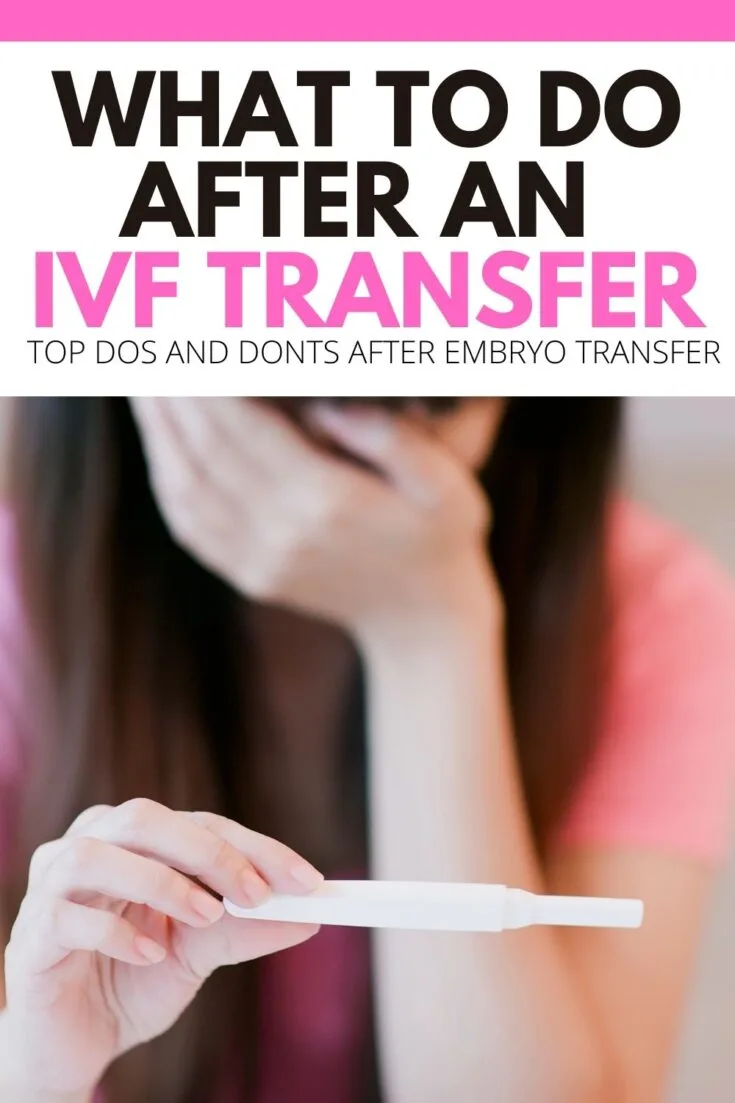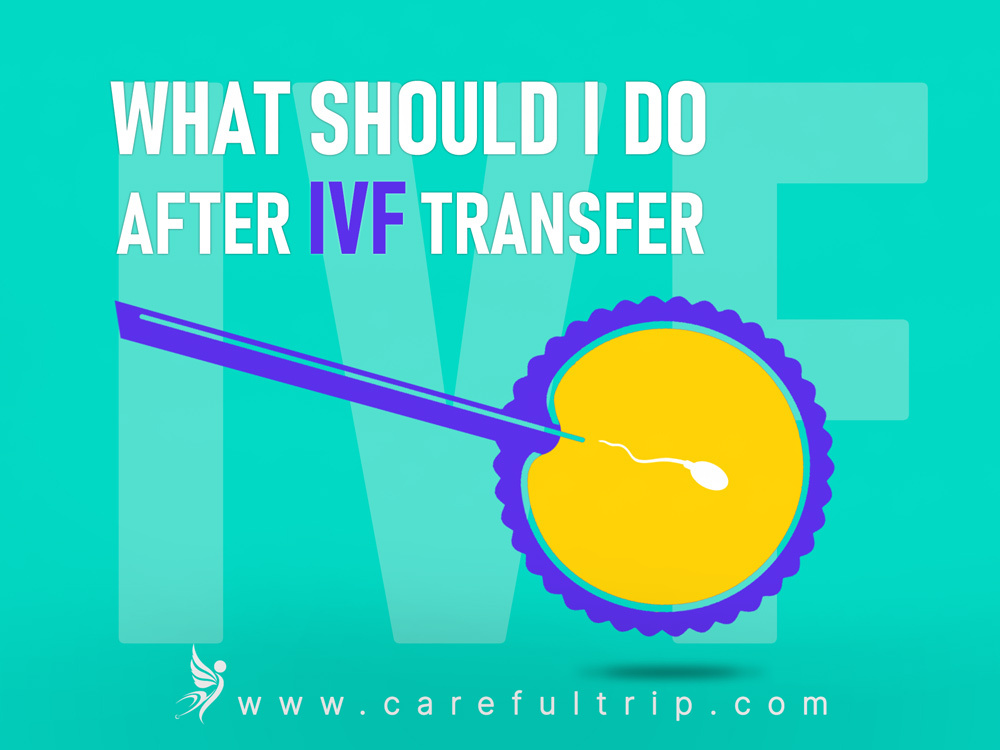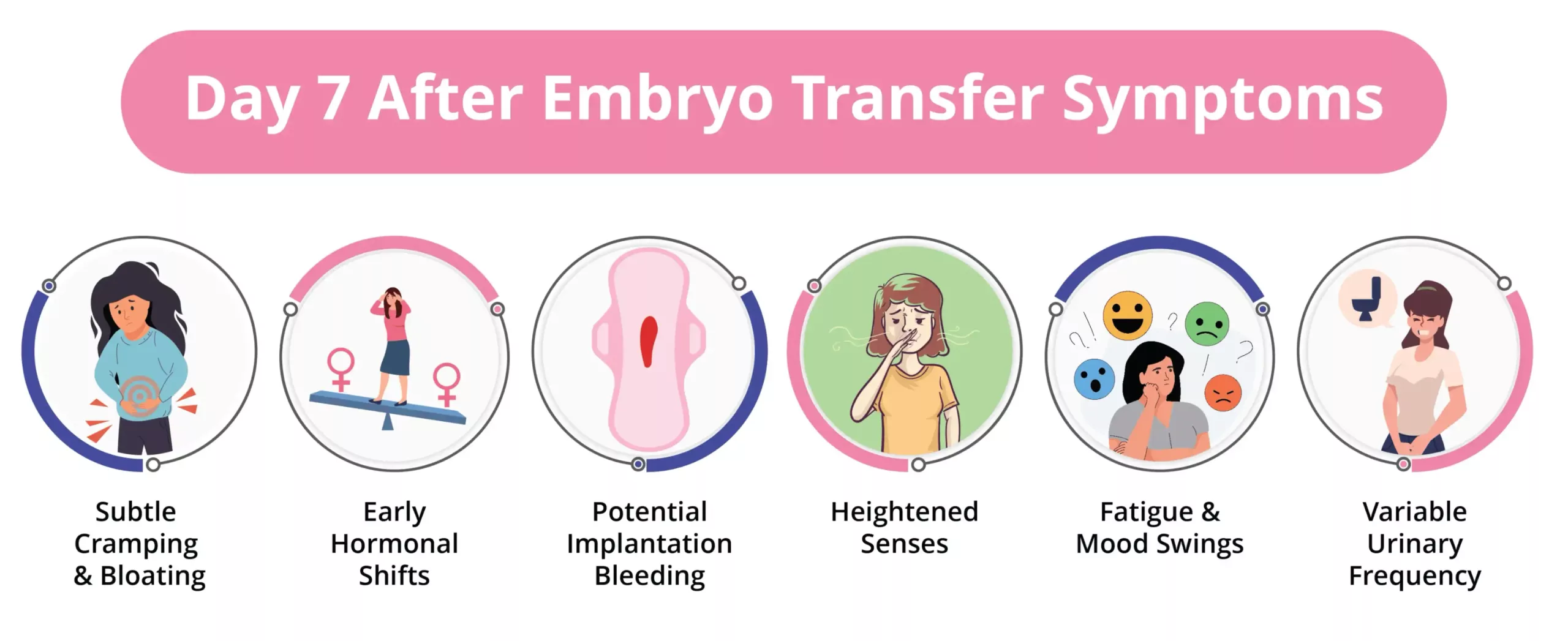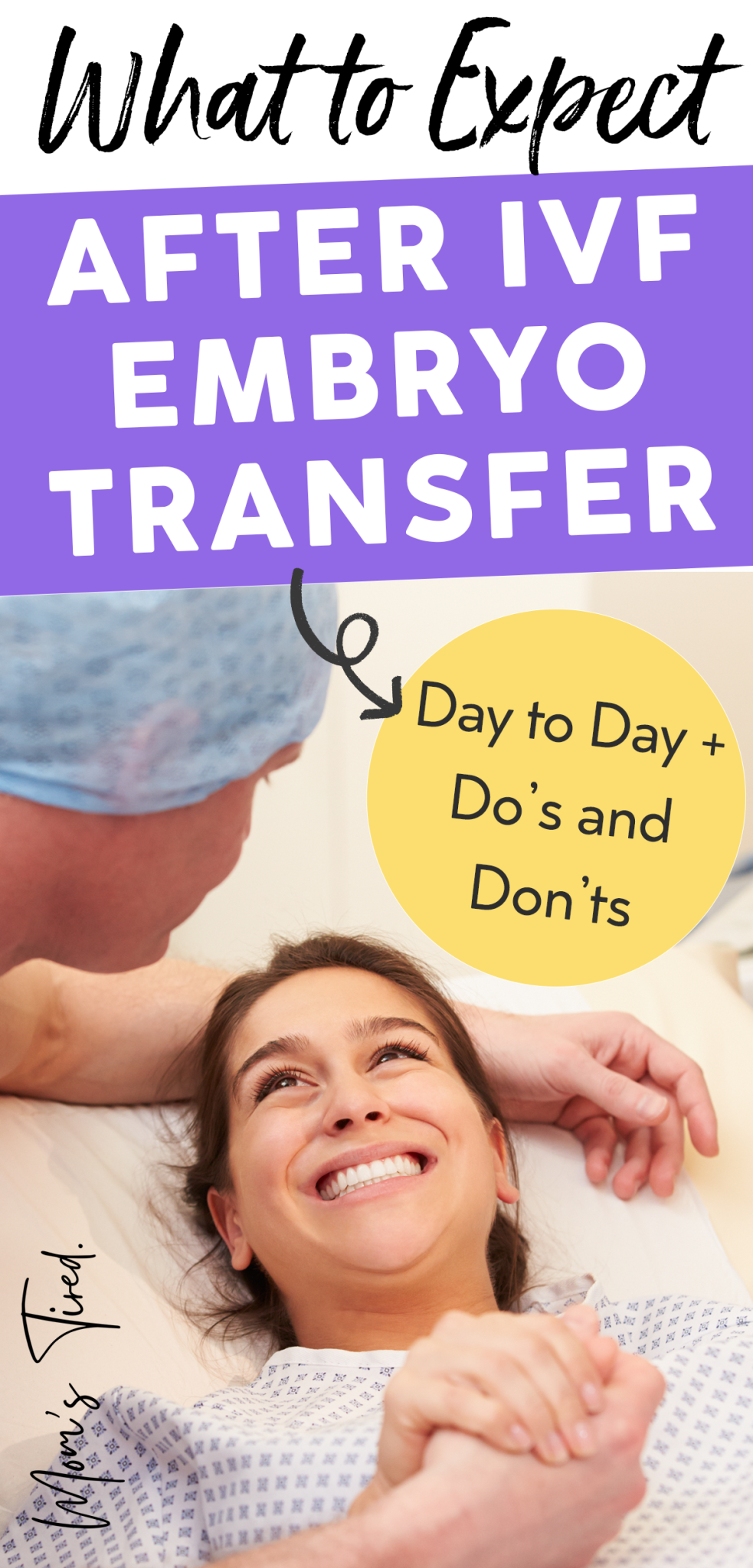What to Do After IVF Transfer: Your Ultimate Guide to Boosting Success
Congratulations! You’ve just completed an embryo transfer as part of your IVF journey. This moment is huge—a mix of hope, excitement, and maybe a little nervousness. Now, you’re in the infamous “two-week wait,” that stretch of time before you can take a pregnancy test to see if the embryo has implanted. It’s totally normal to wonder what you can do to help things along. The good news? While the outcome isn’t entirely in your hands, there are steps you can take to support your body, mind, and spirit during this critical phase.
This guide is packed with practical advice, science-backed tips, and fresh ideas you won’t find everywhere else. Whether it’s tweaking your diet, managing stress, or knowing what to avoid, we’ve got you covered with a deep dive into everything that can make a difference after your IVF transfer. Let’s walk through this together and give you the tools to feel confident and empowered.
Why the Post-Transfer Period Matters
The time after your embryo transfer is a delicate dance between science and nature. Once the embryo is placed in your uterus, it needs to implant into the uterine lining—a process called implantation that usually happens 6-10 days after transfer. Your body is working hard to create the perfect environment for this tiny miracle, and what you do (or don’t do) can play a supporting role.
Think of it like planting a seed. You’ve already picked the best soil (thanks to your doctor’s expertise), but now it’s about giving that seed the right water, sunlight, and care to sprout. Studies show that lifestyle factors—like nutrition, stress levels, and even sleep—can influence how well your body supports early pregnancy. So, while you can’t control everything, you can stack the deck in your favor.
Nourish Your Body: Eating for Implantation Success
Your diet after an IVF transfer isn’t just about filling your stomach—it’s about fueling your body for implantation. The goal is to support a thick, healthy uterine lining and keep inflammation low, both of which can help that embryo settle in.
Load Up on Nutrient-Rich Foods
Focus on foods that give your body the building blocks it needs. Protein, healthy fats, and complex carbs are your best friends right now. Research from the American Society for Reproductive Medicine suggests that a diet rich in antioxidants (think vitamins C and E) can improve embryo implantation rates by reducing oxidative stress.
- Protein powerhouses: Eggs, lean chicken, fish (like salmon), tofu, and lentils. These help repair tissues and support cell growth.
- Healthy fats: Avocado, nuts, seeds, and olive oil. Omega-3s, found in fatty fish, are linked to better fertility outcomes in studies from Harvard Medical School.
- Complex carbs: Quinoa, sweet potatoes, and whole-grain bread. These keep your blood sugar steady, which is key for hormone balance.
Add Implantation-Boosting Superfoods
Some foods have a special edge when it comes to fertility. For example, a 2023 study in Fertility and Sterility found that women who ate more leafy greens and berries had higher success rates after IVF. Here’s what to pile on your plate:
- Spinach and kale: Packed with folate, which supports early embryo development.
- Berries: Blueberries and strawberries are antioxidant champs that fight inflammation.
- Pomegranate: Known for improving blood flow to the uterus, which can aid implantation.
Hydration Is Non-Negotiable
Water might not sound exciting, but it’s a game-changer. Staying hydrated keeps blood flowing to your uterus, helping that embryo get cozy. Aim for 8-10 glasses a day—more if you’re feeling parched. Herbal teas (like chamomile or peppermint) count too, and they can double as a stress-buster.
What to Skip: Foods That Could Hinder Progress
Not all foods are your allies right now. Some can mess with hormones or increase inflammation, so steer clear of these:
- ❌ Processed junk: Chips, sugary snacks, and fast food. They spike inflammation and blood sugar.
- ❌ Too much caffeine: Stick to one cup of coffee a day (about 200 mg). A 2024 study in Human Reproduction linked high caffeine intake to lower implantation rates.
- ❌ Raw or risky stuff: Skip unpasteurized cheeses, raw fish, and undercooked meats to avoid infections like listeria.
Quick Meal Idea: Whip up a “Fertility Bowl” with grilled salmon, quinoa, steamed spinach, and a drizzle of olive oil. Top it with a handful of pomegranate seeds for a tasty, implantation-friendly dish.
Move Smart: Activity After Embryo Transfer
You might be tempted to plop on the couch and not move until your pregnancy test. But here’s the truth: a little movement can do wonders, while too much (or too little) might not be ideal. Let’s break it down.
Ditch the Bed Rest Myth
Back in the day, doctors told women to stay in bed for days after a transfer. Science has since debunked that. A 2022 study in The Journal of Assisted Reproduction and Genetics found no difference in success rates between women who rested all day and those who resumed light activity. In fact, gentle movement boosts circulation, which your uterus loves.
Best Activities to Try
Keep it low-key and stress-free. Here are some winners:
- Walking: A 20-minute stroll around the block gets your blood flowing without overdoing it.
- Gentle yoga: Poses like child’s pose or cat-cow stretch your body and calm your mind. Avoid twists or inversions, though.
- Stretching: Simple arm and leg stretches keep you limber and relaxed.
What to Avoid: High-Impact No-Nos
Your ovaries might still be tender from the IVF process, and heavy exercise could jostle things too much. Skip these for now:
- ❌ Running or jumping: High-impact moves can strain your body.
- ❌ Heavy lifting: Leave the grocery bags to someone else.
- ❌ Hot yoga or saunas: Heat can raise your core temperature, which isn’t great for implantation.
Pro Tip: Listen to your body. If you feel tired or crampy, take it as a sign to rest. You’re not being lazy—you’re being smart.
Mind Matters: Stress Less, Hope More
The two-week wait can feel like an emotional rollercoaster. Will it work? What if it doesn’t? Your mind might be racing, but keeping stress in check is crucial. Stress hormones like cortisol can mess with your body’s balance, so let’s talk about how to stay calm.
Why Stress Hurts (and How to Fight It)
A 2023 study from the University of California found that women with lower stress levels during IVF had a 15% higher chance of implantation. Stress doesn’t cause failure, but it can make your body less hospitable. The fix? Build a toolbox of relaxation tricks.
Relaxation Hacks That Work
Try these to keep your cool:
- Deep breathing: Inhale for 4 seconds, hold for 4, exhale for 4. Repeat 5 times. It’s simple but resets your nervous system.
- Journaling: Write down your hopes, fears, or even a gratitude list. Getting it out of your head can lighten the load.
- Guided meditation: Apps like Calm or Headspace have 10-minute sessions designed for fertility stress.
Surround Yourself With Positivity
Lean on your support crew—your partner, a friend, or even an online IVF community. Share a laugh, watch a silly movie, or cuddle with your pet. Little joys add up.
Interactive Moment: What’s your go-to stress-buster? Pick one below and try it today!
- ✔️ A warm bath with lavender oil
- ✔️ A funny podcast
- ✔️ A quick dance party in your living room

Medications and Supplements: Stick to the Plan
Your doctor likely gave you a lineup of meds or supplements to take after the transfer. These aren’t optional—they’re your VIPs for success.
Progesterone: The Star Player
Progesterone thickens your uterine lining, making it a cozy home for the embryo. Whether it’s a shot, pill, or suppository, take it exactly as prescribed. Missing a dose could throw off your hormone levels, and we don’t want that.
Other Common Helpers
Depending on your case, you might also be on:
- Baby aspirin: Improves blood flow to the uterus.
- Prenatal vitamins: Folate and vitamin D are must-haves for early pregnancy.
- Steroids: Sometimes used to calm your immune system.
A Word on Supplements
Tempted to add extra vitamins? Talk to your doctor first. Too much of a good thing (like vitamin A) can backfire. Stick to what’s prescribed unless you get the green light.
Checklist for Meds:
- ✔️ Set phone reminders for doses.
- ✔️ Keep a daily log to track what you’ve taken.
- ❌ Don’t skip or double up without asking your clinic.

Sleep: Your Secret Weapon
Sleep isn’t just a luxury—it’s a necessity after an IVF transfer. Your body does a lot of repair work while you’re snoozing, and that includes supporting implantation.
Why Sleep Matters
A 2024 study in Sleep Medicine found that women who got 7-9 hours of quality sleep per night during the two-week wait had higher pregnancy rates than those who skimped. Sleep helps regulate hormones and keeps inflammation low—both big wins for your embryo.
How to Sleep Better
Set yourself up for restful nights with these tips:
- Stick to a routine: Go to bed and wake up at the same time every day.
- Create a cozy vibe: Dim lights, cool room (around 65°F), and comfy bedding.
- Limit screen time: Blue light from phones can mess with melatonin. Wind down with a book instead.
Position Puzzle: Can I Sleep on My Stomach?
Good news—you don’t need to stress about sleep position. Sleeping on your stomach won’t squish the embryo (it’s microscopic!). Side or back sleeping is fine too. Just get comfy and let your body rest.
What’s Normal (and What’s Not): Symptoms to Watch
After the transfer, you might feel… something. Or nothing at all. Both are okay! Let’s decode what’s typical and when to call your doctor.
Common Post-Transfer Feelings
These are usually no big deal:
- Mild cramping: Could be implantation or just your uterus adjusting.
- Spotting: Light pink or brown spotting can happen as the embryo burrows in. A 2023 survey by the Fertility Network found 1 in 3 women noticed this and still had successful pregnancies.
- Tiredness: Hormones and emotions can zap your energy.
Red Flags to Report
If you notice these, reach out to your clinic ASAP:
- Heavy bleeding: Like a period or worse, with clots.
- Severe pain: Beyond mild cramps, especially if it’s one-sided (could signal an ectopic pregnancy).
- Fever: Might mean an infection.
Real Talk: Every twinge doesn’t mean success or failure. Your body’s just doing its thing, so try not to overanalyze.
Unique Tips You Won’t Find Everywhere
Most articles cover the basics—eat well, rest, avoid stress. But let’s go deeper with some fresh ideas that can give you an edge.
Warm Your Feet, Warm Your Uterus
Ever heard of “cold uterus syndrome”? It’s a concept from traditional Chinese medicine, suggesting poor circulation can hinder implantation. No hard science backs this, but a small 2024 pilot study in Complementary Therapies in Medicine found women who kept their feet warm (with socks or a heating pad) reported less cramping and higher comfort levels post-transfer. Worth a try—cozy socks never hurt!
Try an Implantation Visualization
Picture this: your embryo snuggling into your uterine lining like a tiny hug. Visualization won’t magically make it happen, but a 2023 study in Mindfulness showed that positive imagery reduced anxiety in IVF patients by 20%. Spend 5 minutes a day imagining a happy, healthy outcome—it’s a feel-good boost.
Track Your Two-Week Wait With a Mood Jar
Here’s a fun twist: Grab a jar and some colorful paper. Each day, write down one word about how you feel (e.g., “hopeful,” “nervous”) and drop it in. By the end of the wait, you’ll have a rainbow of emotions to reflect on—plus, it keeps you engaged without obsessing over symptoms.
Interactive Poll: Which unique tip are you most excited to try?
- Warm feet with socks
- Visualization
- Mood jar

Sex, Baths, and Other FAQs
You’ve got questions, and we’ve got answers. These pop up a lot during the two-week wait, so let’s clear the air.
Can I Have Sex?
Most doctors say no until after the pregnancy test. Why? Orgasms can cause uterine contractions, which might (in theory) disrupt implantation. A 2022 review in Reproductive Biology found no solid proof it harms success, but clinics play it safe. Hold off for now—there’s plenty of time for romance later.
What About Baths?
Skip hot tubs, saunas, and steamy baths. Raising your core temperature could stress the embryo, per a 2024 study in Environmental Health Perspectives. Lukewarm showers or a quick soak (under 100°F) are fine—just don’t overheat.
Can I Travel?
Short trips are usually okay, but long flights or bumpy rides? Not ideal. Sitting for hours can pool blood in your legs, and turbulence might jostle your tender ovaries. If you must travel, wear compression socks and take breaks to stretch.
The Emotional Side: Coping With the Wait
Let’s be real—the two-week wait can test your patience like nothing else. You’re not alone if you’re swinging between hope and worry. Here’s how to ride it out.
Acknowledge All the Feels
It’s okay to cry one minute and laugh the next. IVF is a marathon, and this is the final stretch. Talk to someone who gets it—a partner, friend, or even a therapist. A 2023 report from the American Psychological Association found that emotional support during IVF boosted resilience by 25%.
Distract Yourself (But Not Too Much)
Binge a new show, start a puzzle, or bake something tricky. Keep your mind busy, but don’t overbook yourself—balance is key. One woman I heard about knitted a baby blanket during her wait. It kept her hands moving and her heart hopeful.
Plan for Both Outcomes
Hope for the best, but prep for the rest. If it’s a yes, celebrate! If it’s a no, give yourself grace to grieve and regroup. Either way, you’re strong for getting this far.
When to Test: Timing Is Everything
You might be itching to pee on a stick the day after your transfer. Resist! Testing too early can lead to false results—either a negative that’s too soon or a positive from leftover IVF meds.
The Magic Window
Wait until your clinic says go—usually 10-14 days post-transfer. A blood test (beta hCG) is the gold standard because it’s more accurate than home kits. If you can’t resist a home test, wait at least 12 days and use a sensitive brand (like First Response).
What the Numbers Mean
A beta hCG over 25 mIU/mL is a positive sign, but it’s the trend that matters. Your clinic will likely retest in 48 hours to see if it doubles—a good indicator of a healthy pregnancy.

If It Works: Next Steps
A positive test is just the beginning! You’ll start prenatal care, keep up progesterone (usually until week 10), and watch your little one grow. Celebrate the win—you earned it.
If It Doesn’t: You’re Still Enough
A negative doesn’t mean failure—it means this round didn’t stick. About 60% of first IVF transfers don’t result in pregnancy, per the CDC’s 2023 data. Talk to your doctor about what’s next, whether it’s another transfer or a new plan. You’re not out of the game.




